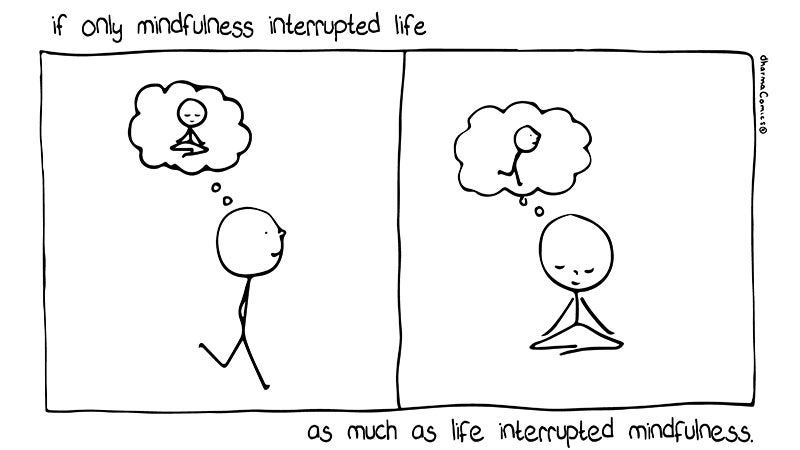In a world that never stops moving, emotional wellness has become both a rare commodity and a quiet revolution. We measure success by productivity, popularity, and possessions — but rarely by peace. Yet emotional wellness, the ability to understand, manage, and express feelings effectively, may be the single most important predictor of long-term happiness and health.
Unlike fleeting happiness or mood boosts, emotional wellness is a state of balance — a steady foundation that allows us to experience the full range of emotions without being ruled by them. It is the art of being at home with yourself, even when life feels chaotic.
Read More: Sleep and Wellness
What Is Emotional Wellness, Really?
The term emotional wellness is often confused with positivity or calmness, but psychologists define it more precisely. According to the Substance Abuse and Mental Health Services Administration (SAMHSA, 2018), emotional wellness involves “the ability to cope effectively with life and create satisfying relationships.” It’s not about eliminating stress or sadness, but developing the skills to navigate emotions rather than drown in them.
Emotional wellness includes:
-
Self-awareness: Recognizing and labeling emotions accurately.
-
Emotional regulation: Managing emotions constructively rather than suppressing them.
-
Resilience: Recovering from adversity with adaptability.
-
Authenticity: Expressing emotions in ways that align with personal values.
-
Connection: Building relationships that support emotional health.
Each of these components works together like muscles — strengthened through attention and use.
The Science of Emotional Balance
Neuroscience has shown that emotions are not obstacles to reason but integral parts of decision-making and wellbeing. Antonio Damasio’s (1994) pioneering research demonstrated that people who lose the ability to feel emotions due to brain damage also lose the ability to make decisions effectively.

In other words, emotions guide our choices by signaling what matters. Emotional wellness, therefore, is not about silencing feelings but understanding them. The prefrontal cortex, which governs reasoning and impulse control, works in tandem with emotional centers such as the amygdala and insula to regulate responses (Gross, 2015). When we’re emotionally well, this system operates like a balanced feedback loop — emotions inform behavior, and reflection shapes emotions.
The Cost of Emotional Neglect
Despite its importance, emotional wellness is often neglected in modern life. We live in an age of constant stimulation — from social media to work emails — that leaves little room for introspection. The pressure to stay upbeat and productive fuels emotional suppression, what psychologists call toxic positivity (Quintero & Long, 2019).
Ironically, this forced optimism undermines resilience. Studies show that denying negative emotions can increase stress responses and reduce psychological flexibility (Shallcross, Troy, & Mauss, 2015). Emotional avoidance doesn’t erase feelings; it buries them alive.
The result? A generation that’s more connected but less emotionally fluent. Rates of anxiety, depression, and burnout have surged globally (World Health Organization [WHO], 2022), suggesting that our emotional ecosystems are out of balance.
Mindfulness and Emotional Regulation
Mindfulness — the practice of present-moment awareness — has become a cornerstone of emotional wellness research. Far from a trendy buzzword, mindfulness has robust empirical backing as a tool for reducing stress and improving emotional regulation.
A meta-analysis by Gu, Strauss, Bond, and Cavanagh (2015) found that mindfulness-based interventions significantly improved psychological well-being by increasing emotional clarity and non-reactivity. When we observe emotions without judgment, the brain’s limbic activity (responsible for emotional arousal) decreases, while regulatory networks strengthen (Tang, Hölzel, & Posner, 2015).

The key insight: emotional wellness is not about controlling feelings but creating space between stimulus and response — what Viktor Frankl famously called “the last of human freedoms.”
Self-Compassion
Another vital pillar of emotional wellness is self-compassion, the ability to treat oneself with kindness in moments of difficulty. Psychologist Kristin Neff (2003) identified three elements of self-compassion:
-
Self-kindness instead of harsh self-judgment.
-
Common humanity — recognizing that suffering is part of the shared human experience.
-
Mindfulness — acknowledging pain without over-identifying with it.
Self-compassion has been shown to reduce anxiety, depression, and shame (Neff & Germer, 2018). In essence, it turns emotional pain into an opportunity for growth instead of self-criticism.
For example, instead of thinking, “I failed, I’m useless,” a self-compassionate mindset reframes it as, “That was hard, but I can learn from it — everyone struggles sometimes.” This small cognitive shift can have profound physiological effects, lowering cortisol levels and increasing heart-rate variability — markers of emotional regulation (Kirschner et al., 2019).
Emotional Intelligence and Daily Life
The term emotional intelligence (EI), popularized by Daniel Goleman (1995), remains one of the most practical frameworks for understanding emotional wellness. EI encompasses self-awareness, self-regulation, motivation, empathy, and social skills — essentially the ability to recognize and manage one’s own emotions and those of others.
Research consistently links high EI to better mental health, relationship satisfaction, and workplace success (Schutte et al., 2007). It acts as a “psychological immune system,” buffering individuals against stress and conflict.

One study by Fernández-Berrocal and Extremera (2016) found that individuals with high emotional intelligence experience fewer depressive symptoms because they can reinterpret stressful situations constructively — a process known as cognitive reappraisal.
Thus, cultivating EI is not just about being emotionally “smart” — it’s about being emotionally well.
Building Emotional Wellness
Emotional wellness is not a destination but a practice. Below are science-backed strategies to strengthen it:
1. Name What You Feel
Language shapes emotion. Research by Lieberman et al. (2007) found that labeling emotions (“I feel anxious”) reduces amygdala activation and increases emotional regulation. The simple act of naming feelings brings them into conscious awareness.
2. Practice Emotional Granularity
Instead of general labels like “bad” or “stressed,” specify emotions (e.g., “disappointed,” “overwhelmed,” “lonely”). Higher emotional granularity is associated with better coping and lower depression (Barrett et al., 2001).
3. Cultivate Daily Mindfulness
Set aside five minutes to check in with your inner state — no judgment, just awareness. Apps, breathing exercises, or body scans can help reconnect you with your emotions.
4. Embrace Rest and Solitude
Emotional processing requires downtime. Chronic busyness suppresses emotional reflection. Regular rest — walks, journaling, or quiet time — allows emotions to integrate.
5. Build Supportive Relationships
Connection is medicine. Sharing emotions with trusted people fosters co-regulation, a process where emotional stability is restored through supportive interaction (Feldman, 2017).
6. Seek Professional Support When Needed
Therapy is not just for crisis; it’s training for emotional literacy. Evidence-based approaches such as Cognitive Behavioral Therapy (CBT) and Acceptance and Commitment Therapy (ACT) enhance emotional awareness and flexibility (Hayes et al., 2012).
The Social Dimension of Emotional Wellness
Emotional wellness isn’t only an individual pursuit — it’s also collective. Workplaces, schools, and communities play a major role in shaping emotional climates. Organizational psychologist Adam Grant (2021) notes that emotionally healthy environments normalize vulnerability and encourage authenticity.
Unfortunately, many institutions reward emotional suppression: the stoic worker, the unfazed student, the “always fine” parent. Changing this requires cultural shifts that value empathy, listening, and emotional literacy as much as technical skills.
Imagine a world where boardrooms begin meetings with emotional check-ins or where schools teach emotional regulation alongside mathematics. That’s not idealistic — it’s preventive mental health.
Emotional Wellness in the Digital Era
The digital world complicates emotional wellness. Constant notifications and comparison culture amplify anxiety and reduce attention. A 2021 study by Twenge and Farley found a significant correlation between social media use and decreased emotional well-being among adolescents, largely due to social comparison and disrupted sleep.
Digital emotional wellness means learning to curate your inputs. Who and what you follow affects your emotional tone. Setting digital boundaries — scheduled disconnection, mindful scrolling, or turning off notifications — restores emotional space.
Technology can also help when used wisely: digital mindfulness tools, mood-tracking apps, and online therapy have expanded access to emotional care. Balance, as always, is the key.
Conclusion
Emotional wellness isn’t about staying happy — it’s about staying whole. It’s the ability to experience the storm without losing your center, to feel deeply without falling apart.
In a restless, overstimulated world, emotional wellness is a radical act of balance — one that blends mindfulness, self-compassion, emotional intelligence, and connection.
As we learn to listen to our emotions — not as enemies, but as messages — we cultivate a kind of quiet strength. The world may remain chaotic, but within that chaos, an emotionally well mind can find calm, clarity, and compassion.
Emotional wellness, then, is not the absence of struggle — it’s the mastery of response.
References
Barrett, L. F., Gross, J. J., Christensen, T. C., & Benvenuto, M. (2001). Knowing what you’re feeling and knowing what to do about it: Mapping the relation between emotion differentiation and emotion regulation. Cognition & Emotion, 15(6), 713–724.
Damasio, A. (1994). Descartes’ error: Emotion, reason, and the human brain. Putnam.
Feldman, R. (2017). The neurobiology of human attachments. Trends in Cognitive Sciences, 21(2), 80–99.
Fernández-Berrocal, P., & Extremera, N. (2016). Ability emotional intelligence, depression, and well-being. Emotion Review, 8(4), 311–315.
Goleman, D. (1995). Emotional intelligence. Bantam Books.
Gross, J. J. (2015). Emotion regulation: Current status and future prospects. Psychological Inquiry, 26(1), 1–26.
Gu, J., Strauss, C., Bond, R., & Cavanagh, K. (2015). How do mindfulness-based cognitive therapy and mindfulness-based stress reduction improve mental health? Clinical Psychology Review, 37, 1–12.
Hayes, S. C., Strosahl, K. D., & Wilson, K. G. (2012). Acceptance and commitment therapy: The process and practice of mindful change. Guilford Press.
Kirschner, H., Kuyken, W., Wright, K., Roberts, H., Brejcha, C., & Karl, A. (2019). Soothing your heart and feeling connected: A new experimental paradigm to study the benefits of self-compassion. Mindfulness, 10, 2175–2188.
Lieberman, M. D., Eisenberger, N. I., Crockett, M. J., Tom, S. M., Pfeifer, J. H., & Way, B. M. (2007). Putting feelings into words: Affect labeling disrupts amygdala activity. Psychological Science, 18(5), 421–428.
Neff, K. D. (2003). Self-compassion: An alternative conceptualization of a healthy attitude toward oneself. Self and Identity, 2(2), 85–101.
Neff, K. D., & Germer, C. K. (2018). The mindful self-compassion workbook. Guilford Press.
Quintero, S., & Long, D. (2019). Toxic positivity: The dark side of always looking on the bright side. Journal of Positive Psychology and Wellbeing, 3(2), 62–74.
SAMHSA. (2018). Eight dimensions of wellness. U.S. Department of Health and Human Services.
Shallcross, A. J., Troy, A. S., & Mauss, I. B. (2015). Getting better with age: The relationship between age, acceptance, and negative affect. Journal of Personality and Social Psychology, 108(4), 687–702.
Tang, Y. Y., Hölzel, B. K., & Posner, M. I. (2015). The neuroscience of mindfulness meditation. Nature Reviews Neuroscience, 16(4), 213–225.
Twenge, J. M., & Farley, E. (2021). Not all screen time is created equal: Associations with mental health vary by activity and gender. Social Psychiatry and Psychiatric Epidemiology, 56(12), 2075–2089.
World Health Organization (WHO). (2022). World mental health report: Transforming mental health for all. Geneva: WHO.
Subscribe to PsychUniverse
Get the latest updates and insights.
Join 3,022 other subscribers!
Niwlikar, B. A. (2025, November 15). Emotional Wellness in a Restless World and 6 Important Ways to Build It. PsychUniverse. https://psychuniverse.com/emotional-wellness/



